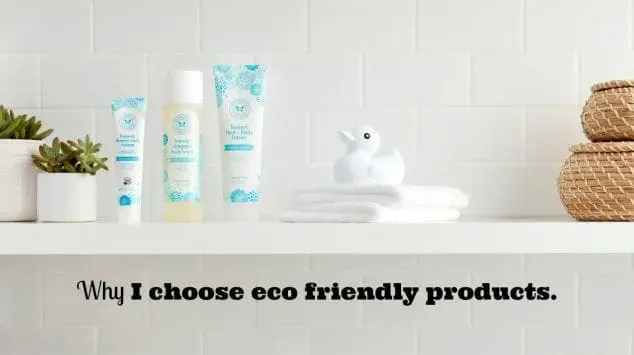As consumers we face a myriad of choices daily. Whether we are trying to figure out a major purchase such as an automobile or something as simple as produce at the grocery store, we have seemingly endless choices. We make these decisions by the dozens on a weekly and even daily basis. Therefore, making green consumer choices really adds up. The advent of the technology and information age has helped us gain incredible amounts of information about the products and services we consider for purchase. Today, I will talk about why choosing eco-friendly products is important as well as what criteria to use when choosing to be more climate friendly.
Why choose eco friendly products?

The answer to why buy eco friendly products is most often better for your health and for that of your environment which will impact your health as well. That is the pragmatic answer. The more idealistic answer, which is just as important really, is that you are trying to make a better choice that will protect the health of the planet and the generations to come.
We are on the brink of huge climate change. We don’t even know how much impact we are causing or exactly when to expect to see the biggest impacts of our choices. According to NASA, “Effects that scientists had predicted in the past would result from global climate change are now occurring: loss of sea ice, accelerated sea level rise and longer, more intense heat waves.” It is not hard to notice that mother nature sure seems to be dealing us some harder hands lately.
It is up to each one of us to do our best to minimize climate change. One way we can do this is through buying eco-friendly products. We have the power to make greener choices in all aspects of our lives.

Criteria For Making Green Consumer Choices
When I’m in “ green consumer mode” I tend to create a mental checklist that I can quickly run down when considering something for purchase. This helps me make sure that my everyday choices are ones that help the environment.
- Personal Health – Is this product or service healthier for me or my family?
- Environmental Health – Is this product or service better for the planet either at a local level or at a global level? (I truly think it all works together but you can distinguish between local and global if you like.)
- Local Economy / U.S. Economy – Is this product or service directly benefitting the U.S. or local economy and if so, does it include the entire manufacturing and distribution chain or just some of it.
- Social Causes – Does the purchase of this product or service benefit any social cause(s)?
Don’t let this list overwhelm you. Next time you purchase a product or service and ask yourself, “Does this choice offer an obvious improvement from the last time I went through the exercise?”
Don’t worry about making the choosing eco-friendly products that are the absolute best choice. Just try to make better choices all the time. Always hit at least hit a few of the green consumer choices criteria.
Now that we have defined these criteria for making green consumer choices, below are a couple scenarios that were personally experienced and the process I went through.
How To Make The Switch To Greener Choices
Plastic shopping bags:
About 3 years ago I finally made the switch to using my own reusable shopping bags instead of taking home the plastic ones and recycling them back at the store. I certainly hit the environmental point on the list; one could argue that translates into personal health too. However, it didn’t meet the local economy or social cause attributes. There are many great companies popping up who are coming up with creative ways to recycle or “upcycle” items to keep them out of landfills and turn them into another useful product.
Drinking water:
Most of us probably know that the vast majority of bottled water is just filtered tap water. So, by purchasing a Brita pitcher filter about 6 years ago I feel good about not supporting “water mining” and protecting local water sources as well as not supporting the creation of PETE plastic bottles. Also, filtering my water seems like a good idea for me and my daughter’s health. Brita is located in California but their products are manufactured overseas. This is somewhat good for the U.S. economy but I don’t like the long shipping distances for their products and the fossil fuels it consumes. However, Brita has a recycling program for the used filters and they support clean drinking water initiatives around the world. This example hits all 4 categories at some level but certainly leaves some room for improvement.
These scenarios can be discussed at length but you probably get the idea. The take away is even though my choices weren’t perfect they represented great improvement over my previous actions. The more we begin to change our thought process about how we approach the hundreds of choices we face daily, the better our decision making. It has taken me quite a bit of time to “train my brain” and scrutinize my choices over the years. Now, I take my time when making a purchase and ultimately feel better about the purchase.
Conclusion
Becoming a savvier consumer when it comes to environmental, personal and economic health is something anyone can do. These eco-friendly choices create positive change. I hope this post was informative. I look forward to any feedback people may have about their experiences and great products/companies. How has choosing eco-friendly products has helped you in your day to day life to be more climate friendly?
Just remember, “A Little Choice Goes a Long Way”!
Related Posts:
